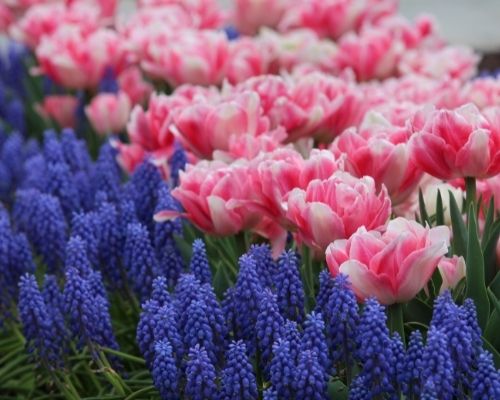Expert Tips to Ensure Your Success
Fall is the time for planting crocus, daffodils, tulips, hyacinths, alliums and other spring-blooming flowers. Planting these bulbs in fall gives them time to establish roots before they go dormant for the winter. The bulbs can be planted anytime from late September through December, though this varies by location and the type of bulbs you are growing. Read on to learn more about when to plant spring-blooming bulbs.
Flower Bulbs Are Perishable
Inside each flower bulb is a plant that’s waiting to bloom. When flower bulbs are not properly cared for, they can become dry or mushy, which can damage or even kill the plant inside. Ordering bulbs by mail can help to ensure that the bulbs are stored correctly until the proper planting time for your growing zone. When you receive your flower bulbs, they should feel heavy and firm. Check the bulbs over and remove any that are soft or show signs of decay.
How to Store Fall Bulbs Until Planting Time
Warmth and moisture are the enemies of dormant flower bulbs. If you need to hold the bulbs for a few weeks before planting, store them somewhere that’s cool, dark and dry. Air circulation is very important, so avoid unvented plastic bags that can trap moisture and encourage mold and fungal growth. It’s best to store the bulbs in paper bags, perforated plastic bags or a ventilated cardboard box.
Make sure the bulbs stay completely dry, which means not storing them in the refrigerator. Darkness is also important because light can stimulate sprouting. And don’t let your bulbs freeze -- it will kill them.
What’s the Best Time to Plant Most Fall Bulbs?
Flower bulbs are remarkably tough and forgiving. But planting them at the ideal time will help them look their best.
Most spring-flowering bulbs should be planted 6 to 8 weeks before the soil begins to freeze. In growing zones 4-5, the ideal planting time is mid to late October. Gardeners in zones 6-8 should wait until November. In warmer areas (zones 9-10), most spring-blooming bulbs must be chilled before they are planted. Learn more about that here: How to Grow Spring Bulbs in Warm Climates.
Once your bulbs are safely in the ground, small feeder roots will begin emerging from the base of the bulbs. These anchor the bulbs in place during winter and keep them properly hydrated until spring. If the soil is too warm when you plant the bulbs, they may begin to sprout as well as grow roots. To avoid this, it’s best to wait until the recommended planting time.
When to Plant Tulips and Daffodils
Tulips benefit from a later than average planting time. Cold soil inhibits fungal diseases (like fusarium) that can plague tulip bulbs. If you live in hardiness zones 3-5, it’s best to wait until late October or early November to plant your tulips. In zones 6-8, you can plant them from mid-November through December. Another late planting benefit is reduced pressure from squirrels and other furry pests who love to steal tulip bulbs.
Daffodils, on the other hand, benefit from being planted in early fall, before most other bulbs. By September, daffodil bulbs often start sending out roots – sometimes even before they’re in the ground. Once this happens, the bulbs become more vulnerable to drying out and the best way to avoid that is to plant them. Daffodil bulbs that are planted in very late fall may bloom later than normal or not bloom at all. But daffodils are tough and even if they don’t flower well the first year, they almost always recover.
When Best Laid Plans Go Awry
Life doesn’t always go according to plan. Flower bulbs sometimes get purchased and are then misplaced or forgotten. Fortunately, most spring-blooming flower bulbs are very forgiving. As long as the soil isn’t frozen and is not waterlogged, you can plant bulbs as late as Christmas and still have a good chance of seeing them bloom.
If you live in a cold climate and need to plant later than what’s recommended, consider covering the planting area with mulch. This will keep the soil warmer and give the bulbs a few extra weeks to get their roots established. Another option is to plant the bulbs in pots. To learn more about that, read How to Grow Spring Bulb in Containers.
Most spring-blooming bulbs need to go through at least 10 weeks of cold temperatures (35-45°F) in order to bloom properly. During this time, the plants inside the bulbs complete a critical stage of their development. Bulbs that don't go through the full chilling period may display shorter stems and smaller or malformed flowers. But planting bulbs in early winter is better than trying to hold them over until spring. By spring the bulbs will be desiccated and no longer viable.
Shop our complete selection of spring-blooming bulbs HERE. You can find more information about growing spring-blooming bulbs on our website, including:
How to Plan a Spring Bulb Garden
How to Force Bulbs for Indoor Flowers
Landscaping With Spring Blooming Bulbs

